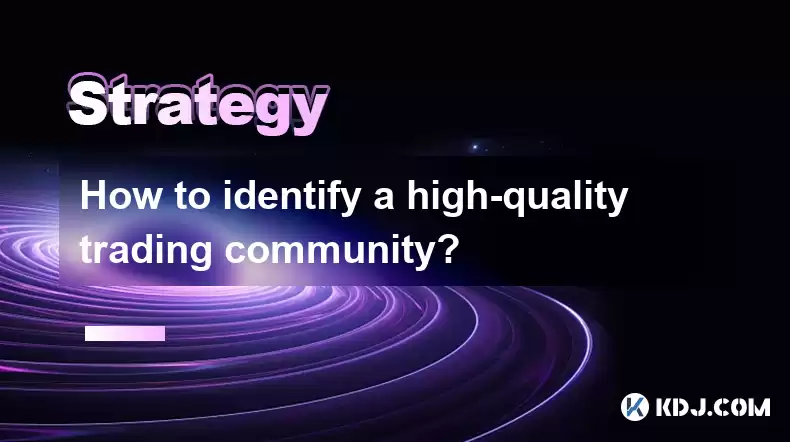-
 Bitcoin
Bitcoin $118400
1.64% -
 Ethereum
Ethereum $4210
-1.74% -
 XRP
XRP $3.175
-2.25% -
 Tether USDt
Tether USDt $1.000
0.00% -
 BNB
BNB $800.7
-0.18% -
 Solana
Solana $183.2
1.19% -
 USDC
USDC $0.9998
0.00% -
 Dogecoin
Dogecoin $0.2319
-4.30% -
 TRON
TRON $0.3388
1.11% -
 Cardano
Cardano $0.7951
-1.77% -
 Hyperliquid
Hyperliquid $44.76
1.61% -
 Chainlink
Chainlink $21.93
2.82% -
 Stellar
Stellar $0.4409
-1.92% -
 Sui
Sui $3.828
-2.37% -
 Bitcoin Cash
Bitcoin Cash $568.3
-0.57% -
 Hedera
Hedera $0.2561
-2.80% -
 Ethena USDe
Ethena USDe $1.001
-0.02% -
 Avalanche
Avalanche $23.63
-3.68% -
 Litecoin
Litecoin $124.0
1.80% -
 Toncoin
Toncoin $3.317
-2.74% -
 UNUS SED LEO
UNUS SED LEO $9.029
0.34% -
 Shiba Inu
Shiba Inu $0.00001349
-2.54% -
 Uniswap
Uniswap $10.85
-1.44% -
 Polkadot
Polkadot $4.025
-2.41% -
 Dai
Dai $1.000
0.01% -
 Cronos
Cronos $0.1619
2.41% -
 Ethena
Ethena $0.7756
4.12% -
 Bitget Token
Bitget Token $4.437
-1.70% -
 Pepe
Pepe $0.00001194
-3.82% -
 Monero
Monero $267.3
-2.17%
How to identify a high-quality trading community?
To identify a high-quality trading community, assess its communication channels, community engagement, educational resources, and commitment to expertise, accountability, and transparency.
Feb 25, 2025 at 04:54 am

Key Points:
- Community Features: Assess the platform's communication channels, member engagement, and overall vibe.
- Expertise and Experience: Evaluate the experience and knowledge of moderators and key members.
- Educational Resources: Determine the availability of educational materials, webinars, and forums for knowledge sharing.
- Updates and Analysis: Stay informed about market news, industry trends, and technical analysis provided by the community.
- Trading Strategies and Signals: Evaluate the quality and consistency of provided trading strategies and signals.
- Community Culture: Observe the supportive, respectful, and inclusive nature of the community interactions.
- Accountability and Transparency: Ensure the community is transparent about its practices and holds its members accountable.
- Platform Technology and Infrastructure: Assess the reliability, security, and accessibility of the community's platform.
How to Identify a High-Quality Trading Community:
- Community Features:
- Evaluate the effectiveness of communication channels such as Telegram, Discord, or forums.
- Check for regular updates, active discussions, and timely responses from community leaders.
- Assess the overall vibe of the community, which should be collaborative, supportive, and respectful.
- Expertise and Experience:
- Identify the qualifications and experience of moderators, admins, and key influencers.
- Look for industry experts, experienced traders, and successful investors among community members.
- Consider the community's track record of providing accurate and reliable information.
- Educational Resources:
- Check for educational materials, webinars, and forums that cover beginner to advanced trading concepts.
- Evaluate the quality and depth of provided resources, ensuring they are comprehensive and up-to-date.
- Assess the community's commitment to learning and helping traders improve their skills.
- Updates and Analysis:
- Stay informed about latest market news, industry trends, and technical analysis provided by the community.
- Look for timely updates, comprehensive breakdowns, and in-depth market forecasts.
- Evaluate the accuracy and consistency of the community's analysis and insights.
- Trading Strategies and Signals:
- Examine the quality and consistency of provided trading strategies and signals.
- Check for clear trading plans, risk management guidelines, and transparent performance results.
- Evaluate the community's track record in generating profitable returns.
- Community Culture:
- Observe the supportive and encouraging nature of the community interactions.
- Look for respectful discussions, constructive feedback, and a welcoming atmosphere for both experienced and novice traders.
- Assess the community's commitment to fostering a positive and inclusive environment.
- Accountability and Transparency:
- Ensure the community is transparent about its practices and holds its members accountable.
- Check for clear rules and guidelines, including conflict of interest disclosures and bans on harmful behaviors.
- Look for mechanisms for reporting and addressing conflicts and unethical conduct.
- Platform Technology and Infrastructure:
- Assess the reliability, security, and accessibility of the community's platform.
- Ensure that the platform is easy to navigate, has minimal downtime, and protects user data.
- Evaluate the community's technology infrastructure and its ability to handle high traffic and data volumes.
FAQs:
1. What's the secret to finding a genuinely valuable trading community?
- Focus on the quality of interactions, expertise, educational resources, and accountability.
- Avoid communities that solely promote quick profits or engage in unethical practices.
2. What red flags should I watch out for when evaluating a trading community?
- Communities that prioritize hype over substance, offer unrealistic promises, or promote risky trading strategies.
- Communities with a lack of transparency, poor communication, or a toxic culture.
3. How can I maximize the benefits of joining a trading community?
- Actively engage in discussions, share your insights, and help others.
- Utilize educational materials and expert advice to enhance your trading knowledge.
- Share your wins and losses transparently and seek constructive feedback to improve your trading.
4. What's the best way to communicate with a trading community's moderators or influencers?
- Use appropriate communication channels within the community platform.
- Be respectful and concise in your inquiries.
- Avoid personal attacks or disruptive behavior.
5. What sets a high-quality trading community apart from an average one?
- A strong commitment to education, transparency, and accountability.
- A knowledgeable and experienced team of moderators and key members.
- A consistent track record of providing valuable insights and support to its members.
Disclaimer:info@kdj.com
The information provided is not trading advice. kdj.com does not assume any responsibility for any investments made based on the information provided in this article. Cryptocurrencies are highly volatile and it is highly recommended that you invest with caution after thorough research!
If you believe that the content used on this website infringes your copyright, please contact us immediately (info@kdj.com) and we will delete it promptly.
- LYNO AI & XRP: Decoding the ROI Potential in a Shifting Crypto Landscape
- 2025-08-11 04:30:11
- Cryptos on the Cusp: Cold Wallet, Price Breakouts, and What's Hot Now
- 2025-08-11 04:50:11
- Dogecoin, Meme Coins, and Remittix Utility: What's the Hype?
- 2025-08-11 04:50:11
- Sky Bet, ESPN, and the Spartans Bonus: A Betting Landscape Overview
- 2025-08-11 05:11:16
- Altcoin Buyouts & Market Removals: Crypto Development's Wild Ride
- 2025-08-11 04:30:11
- Bitcoin Banks Arrive: El Salvador's Bold Play with Investment Banks and Crypto
- 2025-08-11 04:55:12
Related knowledge

How to use stop-loss orders to limit potential losses?
Aug 08,2025 at 02:01pm
Understanding Stop-Loss Orders in Cryptocurrency TradingA stop-loss order is a risk management tool used by traders to automatically sell a cryptocurr...

What are the most promising altcoins to invest in?
Aug 10,2025 at 11:42am
Understanding the Role of Private Keys in Cryptocurrency WalletsIn the world of cryptocurrency, private keys are the cornerstone of ownership and cont...

How to read cryptocurrency charts and use technical analysis?
Aug 08,2025 at 11:08am
Understanding the Basics of Cryptocurrency ChartsCryptocurrency charts are graphical representations of price movements over time. These charts are es...

What is the difference between long-term holding (HODLing) and short-term trading?
Aug 10,2025 at 05:30pm
Understanding HODLing in the Cryptocurrency SpaceThe term HODL originated from a typo in a 2013 Bitcoin forum post and has since become a widely accep...

How to do your own research (DYOR) before investing in a crypto project?
Aug 08,2025 at 09:07pm
Understanding the Core Principles of DYOR in CryptocurrencyEngaging in due diligence before investing in any cryptocurrency project is essential to mi...

How to build a diversified crypto portfolio?
Aug 09,2025 at 12:21pm
Understanding the Importance of Diversification in CryptoDiversification in the cryptocurrency space is a strategy used to reduce risk by spreading in...

How to use stop-loss orders to limit potential losses?
Aug 08,2025 at 02:01pm
Understanding Stop-Loss Orders in Cryptocurrency TradingA stop-loss order is a risk management tool used by traders to automatically sell a cryptocurr...

What are the most promising altcoins to invest in?
Aug 10,2025 at 11:42am
Understanding the Role of Private Keys in Cryptocurrency WalletsIn the world of cryptocurrency, private keys are the cornerstone of ownership and cont...

How to read cryptocurrency charts and use technical analysis?
Aug 08,2025 at 11:08am
Understanding the Basics of Cryptocurrency ChartsCryptocurrency charts are graphical representations of price movements over time. These charts are es...

What is the difference between long-term holding (HODLing) and short-term trading?
Aug 10,2025 at 05:30pm
Understanding HODLing in the Cryptocurrency SpaceThe term HODL originated from a typo in a 2013 Bitcoin forum post and has since become a widely accep...

How to do your own research (DYOR) before investing in a crypto project?
Aug 08,2025 at 09:07pm
Understanding the Core Principles of DYOR in CryptocurrencyEngaging in due diligence before investing in any cryptocurrency project is essential to mi...

How to build a diversified crypto portfolio?
Aug 09,2025 at 12:21pm
Understanding the Importance of Diversification in CryptoDiversification in the cryptocurrency space is a strategy used to reduce risk by spreading in...
See all articles

























































































